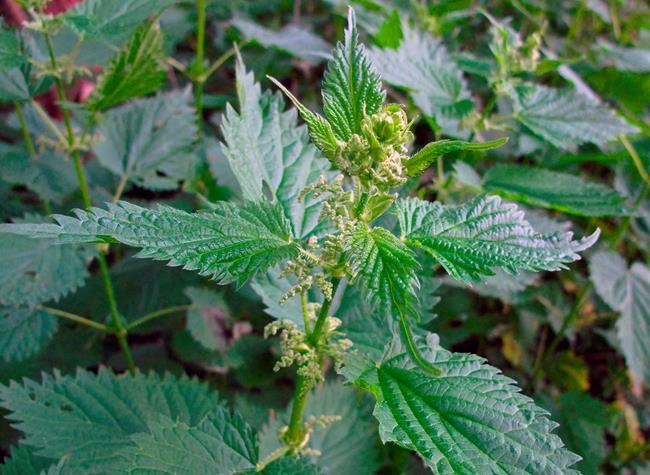
This May 6, 2013 photo shows a stand of stinging needles near Langley, Wash., and is beginning to produce seeds. Cut off the seed heads if it's too difficult to dig out the plants to prevent noxious weeds from spreading out of control. (Dean Fosdick via AP)
March 21, 2017 - 8:25 AM
Weed seeds are among the most patient organisms in nature. Many weeds can produce thousands of seeds per plant per year, and those seeds might lie dormant for decades, just waiting for the right conditions to sprout.
If you want to control weeds, then find where these seeds accumulate — in "seed banks."
"Gardeners should care because that's where all their seeds are coming from," said Ed Peachey, a weed science specialist with Oregon State University Extension. "If you don't prevent weeds from producing seeds, then you'll wind up with large seed banks, and always fighting with the weeds that emerge from those seed banks."
Weeds are unwanted because they are considered unattractive in manicured yards, they spread quickly, and they muscle aside desirable plants from life-giving sunlight, nutrients and moisture.
"Understand what you have in your garden and then decide what to get rid of," Peachey said. "Some weeds are incredibly well adapted to gardens and they compete."
Weed seeds or banks accumulate in neglected lawns, near downspouts and shaded areas, around pathways and driveways, in newly cultivated ground — even under decks, despite the scarcity of sunlight.
Weeds have a number of things in common, said Sandra Mason, an extension horticulturist with University of Illinois Extension.
"They go through their life cycle rapidly, flower quickly, produce vast quantities of seeds, and have some seed adaptations for travel by wind, water or animals," Mason said in a fact sheet.
Soil movement and changes in water content invigorate annual seeds, Peachey said. "Most weed seeds don't live particularly long, a few years perhaps. But there always are a few that can linger."
A dandelion may produce 15,000 seeds per year, purslane more than 52,000, while pigweed can leave behind over 117,000, according to Colorado State University Extension horticulturists. Purslane and pigweed seeds can persist in the soil for 20 and 40 years respectively, they said.
One Arctic plant was successfully germinated after its seeds lay frozen for 32,000 years in the Siberian tundra, said Russian scientists who used radiocarbon dating to validate their claim.
Weed management options are many and varied.
"Hand-weed in small spaces," Peachey said. "Use organic mulches to keep weeds from emerging and producing seeds later. Create stale seed banks by disturbing the soil, using a flaming tool to burn off whatever weeds sprout up, and then do your planting."
It takes two or three weeks for seeds to emerge though, so that scorched-earth policy may delay spring gardening.
"Use specialized hoes," Peachey said. "Triangular hoes or hoop hoes are good at getting the entire weed root out."
Peachey doesn't recommend using chemicals in vegetable gardens unless you're working with more than a tenth of an acre. "Very few (chemicals) that are labeled for garden use are practical," he said.
Be observant. When weeds make seeds, they make them fast.
"It's important to watch weeds through the entire summer season," Peachey said. "If some get by, and if you can't dig them out, then at least cut off their seed heads. It's cheaper to get rid of the seeds than it is to fight the weeds."
___
Online:
For more on weed seed banks, see this University of California Division of Agriculture and Natural Resources Fact Sheet:
http://www.ucanr.edu/sites/Weed_Management/files/74301.pdf
You can contact Dean Fosdick at deanfosdick@netscape.net
News from © The Associated Press, 2017